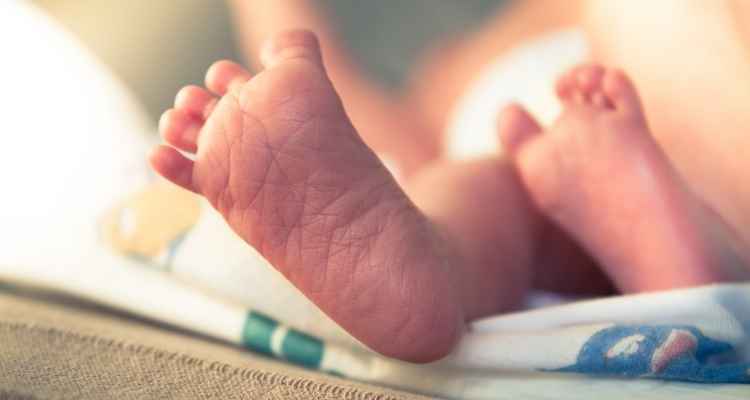If it were up to you, you wouldn’t allow anything bad to happen to your child. However, since childbirth is a complex and delicate process, your child may suffer some minor to severe injuries during this process or immediately after it. In a significant number of cases, the child suffers due to the unprofessional attitude and careless behavior of health staff. Every medical facility has standards that ensure that the child is delivered safely and without complications. Factors such as the right time for C-section, availability of sterilized equipment, and medical supplies are often given utmost importance. When these standards of care are not followed, children are born with injuries that could have been prevented with care.
The most important thing to do upon finding a birth injury is to determine its nature and severity. You must decide if it is preventable or needs severe interventions. Moreover, you have to ensure if the medical negligence caused it or a stroke of bad luck hit you. Some of the types of birth injuries include Hypoxia and Ischemia, Erb’s Palsy, Intrauterine Fetal Demise, Kernicterus, Newborn Jaundice, etc.
Do you wish to know more about the types of birth injuries and what to do about them? Continue reading.
What Are The Many Types Of Birth Injuries?
There are different types of birth injuries depending upon the cause. Some of the very common are:
1. Hypoxia and Ischemia Encephalopathy (HIE)
Hypoxia is the lack of proper oxygen supply, while Ischemia is the lack of adequate blood supply during birth. Depending upon the severity of HIE, the child may suffer from seizures, feeding problems, and hearing and/or vision loss.
2. Brachial Plexus Palsy
Children who have Brachial palsy or Erb’s palsy fail to move their hands, arms, or shoulders. This may arise due to the damage to brachial plexus nerves. These nerves may receive damage due to excessive force on the head or neck during normal delivery. In addition to that, this can happen by pulling the neonate’s feet with undue pressure during a breech delivery.
3. Damage To The Brain
A newborn’s skull is fragile, and thus the brain inside may get impacted during normal deliveries. This may be in the form of hemorrhages or connective tissue swelling. However, more complicated cases may arise due to lack of oxygen or blood supply to a part of the brain, injuries from vacuum pulling/extraction, or unknown brain infections.
4. Jaundice
Jaundice is commonly seen in many newborns. Bilirubin is a pigment that is formed on the lysis of RBCs. Since the body of a newborn changes the type of its blood cells after it is born, there is sometimes an accumulation of Bilirubin, leading to yellowing of the skin. In most cases, jaundice goes away on its own after 5 to 7 days and does not cause serious issues. If it persists more than that, there may be another underlying issue.
How Do You Know Your Baby Has A Birth Injury?
Some birth injuries are revealed months or years after birth when the baby fails to hit a development milestone. However, if you see any signs like a lack of responsiveness, trouble in rolling over, sitting, crawling, or poor reflexes, you should consult your pediatrician and ask for help.
What Can You Do Upon Finding A Birth Injury In Your Kid?
There are a number of treatments for birth injuries depending upon the severity of the problem. Nevertheless, your doctor may suggest one of these.
1. Medicines
There are many chemotherapeutic agents prescribed to treat various birth injuries. These may include antiseizure drugs and medicines for pain management, muscular and bone defects, and digestive distress.
2. Surgical Procedures
In case of severe abnormalities and complications that cannot be treated with chemicals, you might need surgical procedures for your baby. These injuries are most frequently associated with skeletal deformities. However, surgery is only considered when all other treatment plans prove ineffective.
3. Physical Therapy
Physical therapy is the safest treatment for all those birth injuries that mainly affect coordination, motor functions, balance, flexibility, and strength. In cerebral palsy, movements of the head and neck are often compromised. Physical therapy in such cases proves very valuable.
4. Therapy For Speech, Hearing, And Vision
Children who suffer any trauma during birth that affects their speech, vision, or hearing organs may require specific therapies. Throat problems or difficulty with facial muscles often cause difficulty in pronouncing words.
5. Intuitive And Recreational Therapy
Recreational therapy for children who lack responsiveness and cognitive behavior introduces new learning methods. A recreational therapist plans activities that help in the physical and mental growth. The activities are designed in a way that the child could learn in a fun-filled atmosphere.
The foremost step in treating a child with a birth injury is the timely diagnosis of the issue. After the issue has been identified, finding a treatment becomes easy. A delayed diagnosis can make matters worse. The right choice of hospital and the child-care facility is crucial to avoid preventable birth injuries.

